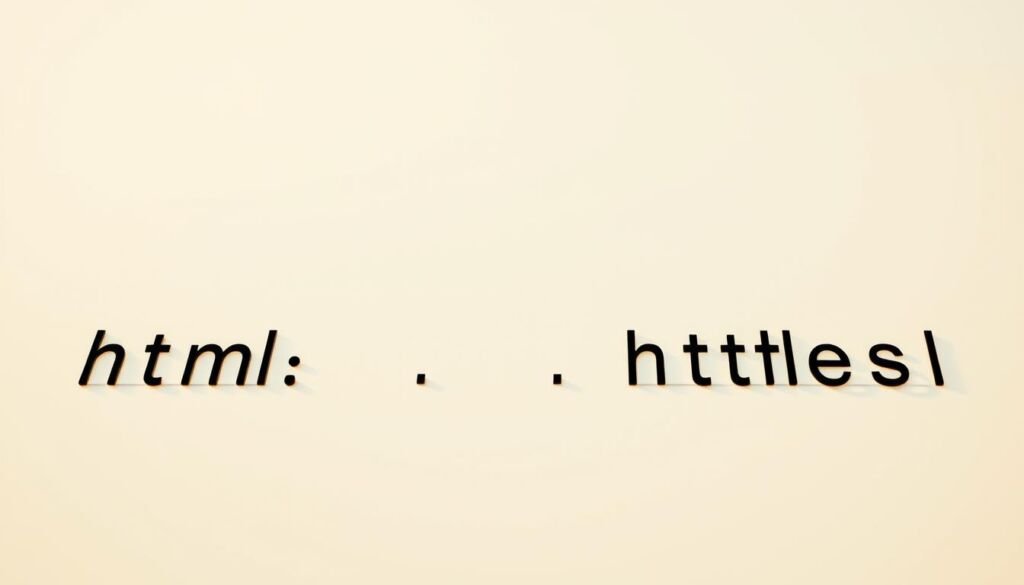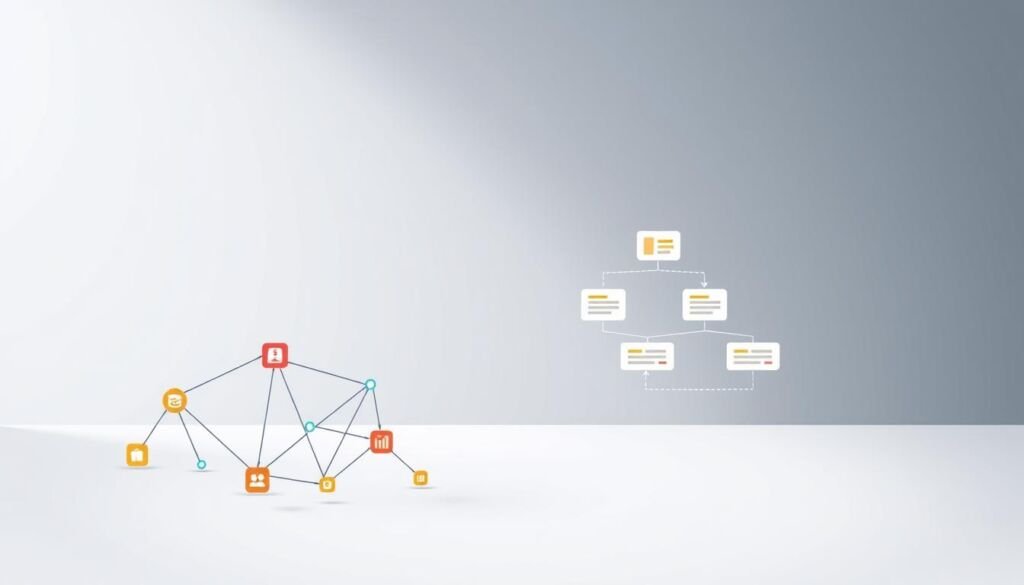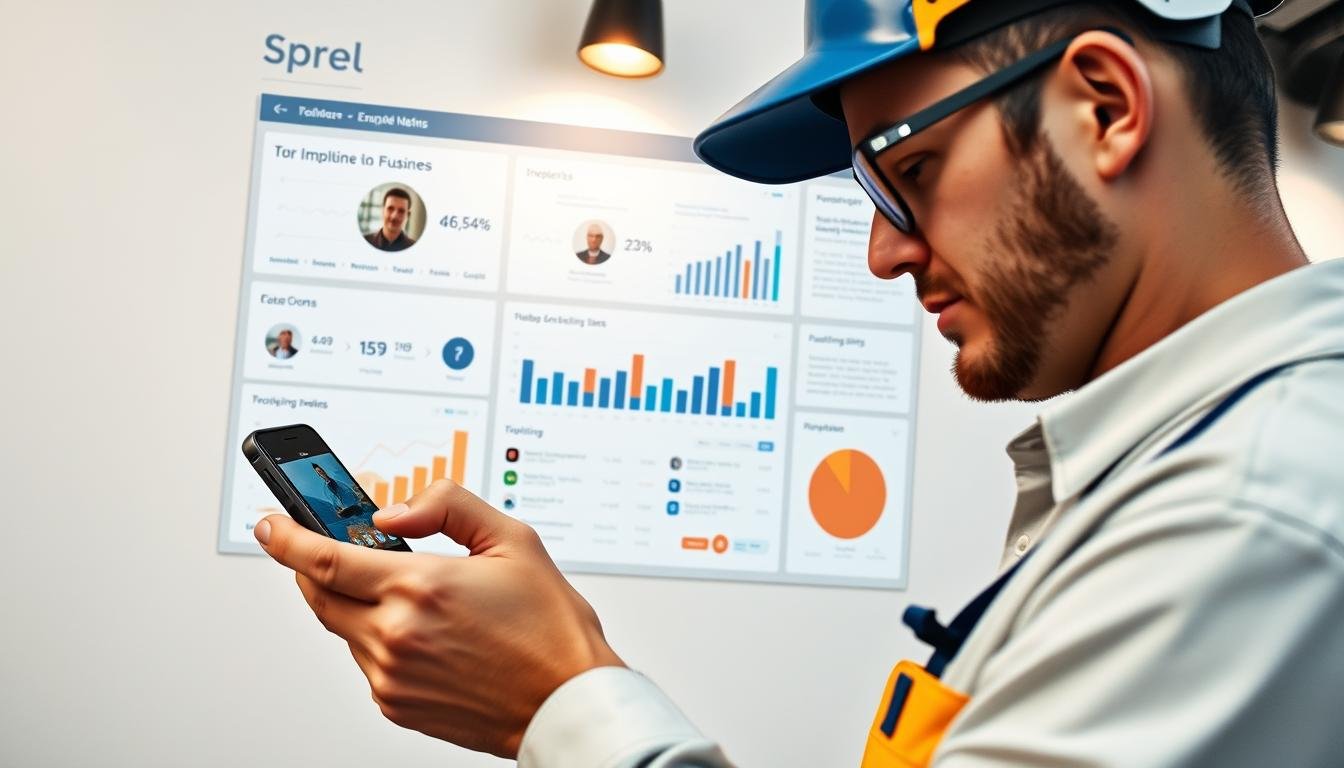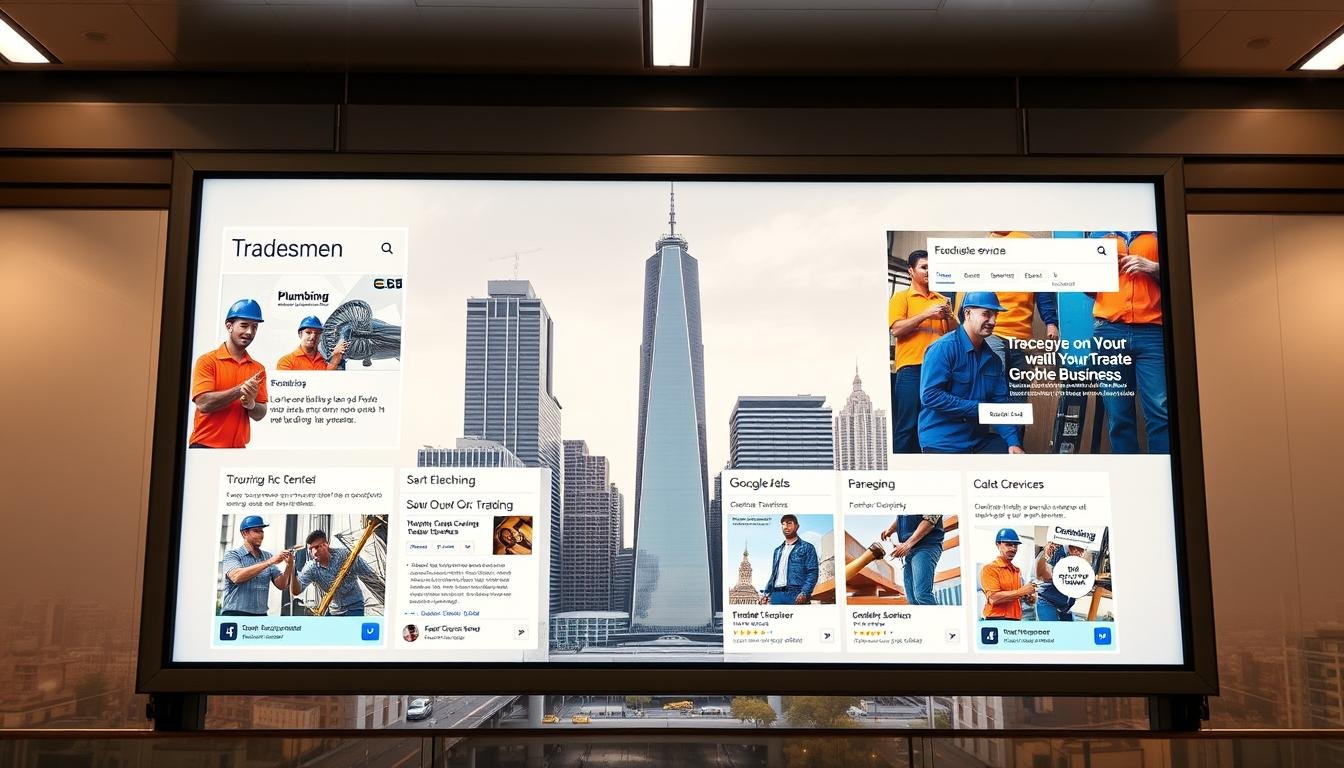
Having a strong online presence is key, and it begins with optimizing your website for search engines. On-page SEO helps make your webpages and content rank higher on Google. This brings more organic traffic to your site.
Our team has put together a detailed guide to help you boost your website’s visibility. By using these strategies, you can greatly improve your search engine rankings. This puts you ahead of your competitors.
With the right on-page SEO techniques, your website’s credibility will soar. You’ll also see more traffic coming to your site. We’ll dive into the essential elements of a winning SEO strategy.
Key Takeaways
- Understand the basics of on-page SEO and its significance.
- Learn effective tactics to improve your website’s search engine rankings.
- Discover how to optimize your webpages for better visibility.
- Stay ahead of the competition with the right SEO strategies.
- Boost your website’s credibility and drive more traffic.
Understanding On Page SEO Fundamentals
Learning about on-page SEO is essential for better search engine rankings. It makes your website more visible and ranked higher. On-page SEO focuses on making each web page friendly for search engines.
Definition and Key Components
On-page SEO is about making web pages rank better in search engines. It includes keyword research, content optimization, meta tags, and URL structure. These elements help make your site more relevant and authoritative.
Why On Page SEO Matters for Rankings
On-page SEO is vital because it helps search engines understand your webpage. By optimizing these elements, your site has a better chance of ranking higher. This leads to more visitors and more sales.
Technical On Page SEO Elements
To boost your website’s search engine ranking, focus on technical on-page SEO. This means optimizing your website’s backend to make it more visible and ranked higher on search engines.
Site Speed Optimization
Site speed is key for search engine ranking. A quicker website means better user experience and higher search engine favor. We’ll look at Core Web Vitals and page load time improvements.
Core Web Vitals
Core Web Vitals are important for user experience, according to Google. They cover loading speed, interactivity, and visual stability. To optimize, make sure your site loads fast, is interactive, and has stable visuals.
Page Load Time Improvements
Boosting page load times improves user experience and search rankings. Use image optimization, browser caching, and reduce CSS and JavaScript files. Optimizing images means compressing them without losing quality.
Mobile-Friendliness
Most internet users access websites on mobile devices. So, having a mobile-friendly website is key. It should work well on all devices, ensuring a smooth experience. Google favors mobile-friendly sites in search results, making it vital for SEO.
URL Structure Best Practices
A well-structured URL is important for both users and search engines. It should be simple, descriptive, and include target keywords. Avoid cryptic URLs with unnecessary parameters. Instead, choose clean, hierarchical URLs that clearly show the page’s content.
| URL Structure Element | Best Practice |
|---|---|
| Simplicity | Keep URLs simple and easy to read |
| Descriptive | Include target keywords in the URL |
| Hierarchy | Use a hierarchical structure to provide context |
Keyword Research for On Page SEO
Effective keyword research is key to a good on-page SEO strategy. We teach our clients how to find the right keywords. This helps them reach their audience better.
Finding High-Value Target Keywords
We use keyword research tools to find valuable keywords. Our team looks at competitors and trends to find the best opportunities.
We start by brainstorming seed keywords. Then, we use tools like Google Keyword Planner, Ahrefs, or SEMrush to grow our list. We analyze competition and search volume for each keyword.
| Keyword | Search Volume | Competition |
|---|---|---|
| On Page SEO | 1000 | High |
| Keyword Research | 500 | Medium |
| SEO Strategies | 2000 | High |
Strategic Keyword Placement
After finding our target keywords, we place them in our content. We use them in the H1 tag, first paragraph, and subheaders. Our goal is to make it natural and easy to read.
For more SEO tips, check out our SEO guide for beginners.
Avoiding Keyword Stuffing Penalties
Keyword stuffing is bad and can hurt your rankings. We avoid it to keep our content valuable and user-friendly. Our content uses keywords wisely and responsibly.
Content Optimization Strategies
Our team has found that optimizing content is key for better SEO results. To boost your on-page SEO, focus on creating high-quality, relevant content. This content should meet your users’ needs.
Creating High-Quality, Relevant Content
Creating high-quality, relevant content is vital for effective optimization. We suggest making detailed, helpful content that matches user intent. Adding visuals can help readers understand better. Also, naturally include target keywords to boost your content’s search engine visibility.
- Do thorough research to know your audience’s needs.
- Use a mix of content types, like text, images, and videos.
- Make sure your content is well-structured and easy to read.
Content Length and Depth Considerations
The length and depth of your content greatly affect its success. There’s no fixed word count for ideal content length. Instead, aim for thoroughness, providing real value to your readers.
When deciding on content length, consider these points:
- Look at top-ranking content for your target keywords.
- Consider the topic’s complexity.
- Balance detail with readability to keep readers engaged.
Readability and User Experience Factors
It’s important that your content is readable and offers a good user experience. Use clear, simple language. Format your content with headings, subheadings, and bullet points. This makes your content easier to read and improves the user experience.
By focusing on these strategies, you can boost your website’s search engine rankings. You’ll also give your users a better experience.
Title Tag and Meta Description Optimization
Improving your website’s search visibility starts with great title tags and meta descriptions. We aim to create engaging titles and descriptions that draw users in.
Crafting Compelling Title Tags
Title tags are key for search engines to grasp your page’s content. We focus on two main points when making title tags:
Title Tag Length and Format
Our title tags should be 50 to 60 characters long. This ensures they look good in search results. Using a separator like a pipe or hyphen makes them easier to read.
Incorporating Primary Keywords
It’s vital to include our main keywords in the title tag. We put the most critical keywords first to have the biggest impact.
Writing Effective Meta Descriptions
Meta descriptions give a quick summary of your page and aim to get users to click. To write great meta descriptions, we:
- Keep them short, between 150-160 characters
- Include our target keywords for relevance
- Use enticing language to boost clicks
By sticking to these guidelines, we can increase our click-through rates. This leads to more visitors to our site.
Header Tags and Content Structure
Header tags are key to making your content easy to read and SEO-friendly. They help organize your content well. This improves both user experience and search engine rankings.
Proper H1, H2, H3 Usage Hierarchy
Using header tags (H1, H2, H3) correctly is vital. The H1 tag should be for your page’s main title. Use H2 tags for subtopics and H3 tags for detailed sections within those subtopics. This structure helps search engines understand your content better.
For example, if you’re writing about “On Page SEO,” your H1 tag could be “On Page SEO: Proven Tactics to Improve Your Rankings.” Then, use H2 tags for sections like “Understanding On Page SEO Fundamentals” and “Technical On Page SEO Elements.” Use H3 tags for subsections like “Definition and Key Components” or “Site Speed Optimization.”
| Header Tag | Usage | Example |
|---|---|---|
| H1 | Main Title | On Page SEO: Proven Tactics to Improve Your Rankings |
| H2 | Subtopics | Understanding On Page SEO Fundamentals |
| H3 | Detailed Sections | Definition and Key Components |
Creating a Logical Content Flow
A logical content flow is essential for keeping users engaged. Start with a broad introduction, then dive into specific details and examples. This makes your content easy to follow and understand.
For instance, when talking about “On Page SEO,” start with its importance. Then, cover keyword research, content optimization, and technical SEO elements. This structure offers a detailed guide that meets your readers’ needs.
To improve your content structure, check out our web design page for tips on creating a user-friendly website.

Image Optimization for On Page SEO
To boost your on-page SEO, focus on optimizing your images. Optimizing images makes your website load faster. It also makes it easier for search engines to crawl and improves user experience.
Image Compression and Loading Speed
Compressing images is key to reducing file sizes without losing quality. Tools like TinyPNG or ImageOptim are great for this. They help your website load faster and perform better overall.
Alt Text and File Name Best Practices
Using good alt text and file names is important for image SEO. Alt text helps search engines understand your images. Descriptive file names, like “image-optimization-techniques.jpg”, are better than generic names like “img123.jpg”.
Image Sitemaps and Structured Data
Image sitemaps help search engines find and index your images better. Using structured data markup for images can also make them more visible in search results.
| Optimization Technique | Description | Benefit |
|---|---|---|
| Image Compression | Reducing file size without losing quality | Faster loading speeds |
| Descriptive Alt Text | Providing context for search engines | Improved image SEO |
| Image Sitemaps | Helping search engines discover images | Better image indexing |
Internal Linking Best Practices
Internal linking is a key tool for improving your website’s structure and search engine ranking. It helps search engines understand your content’s order and guides them to find new pages. This makes your site more visible online.
Strategic Link Placement
Where you place links is very important for both user experience and SEO. Links should be placed where they are most useful and relevant. This could be in articles, product pages, or other related content.
For example, a link to a detailed guide on a related topic can improve the user’s experience. It encourages them to explore more of your site. To learn more about internal linking, visit Yoast’s guide on internal linking.
Anchor Text Optimization
Optimizing anchor text is essential for effective internal linking. We should use descriptive and relevant text that shows what the linked page is about. This helps both users and search engines understand the link’s context.
Best practices include using varied anchor text and avoiding generic terms like “click here.” Make sure the anchor text is relevant to the content it links to.
Creating Content Silos and Topic Clusters
Creating content silos and topic clusters is an advanced strategy for improving your site’s structure and SEO. It groups related content together, making it easier for users and search engines to navigate. This involves identifying core topics and linking related content to them.

Advanced On Page SEO Techniques
To boost your on-page SEO, try advanced techniques. These can greatly improve your search rankings. Our team has seen big improvements with these methods.
Schema Markup Implementation
Schema markup helps search engines get your content’s context. It makes your site more visible in search results. For example, it can show star ratings in search results, boosting your business’s credibility.
Featured Snippet Optimization
Featured snippets are key in search results. To get them, create clear, concise content that answers questions. Use tables or lists to make information easy to read.
Entity SEO and Semantic Relevance
Entity SEO makes your brand a go-to in your field. It’s about linking your content to show your expertise. Semantic relevance means your content is relevant and valuable. Focus on these to boost your site’s authority and ranking.
Conclusion
By using the on-page SEO strategies we’ve talked about, businesses can boost their search rankings. This leads to more organic traffic and a stronger online presence. Our team has covered the key parts of on-page SEO, like technical optimization and content creation.
Effective on-page SEO mixes local SEO methods, keyword research, and content optimization. Knowing and using these techniques helps businesses get seen online more. It also helps them reach their audience better.
In wrapping up our on-page SEO journey, it’s clear a good strategy is key. By remembering the main points and using the tactics we’ve shared, businesses can succeed for the long haul. They’ll stay competitive in the changing digital world.



